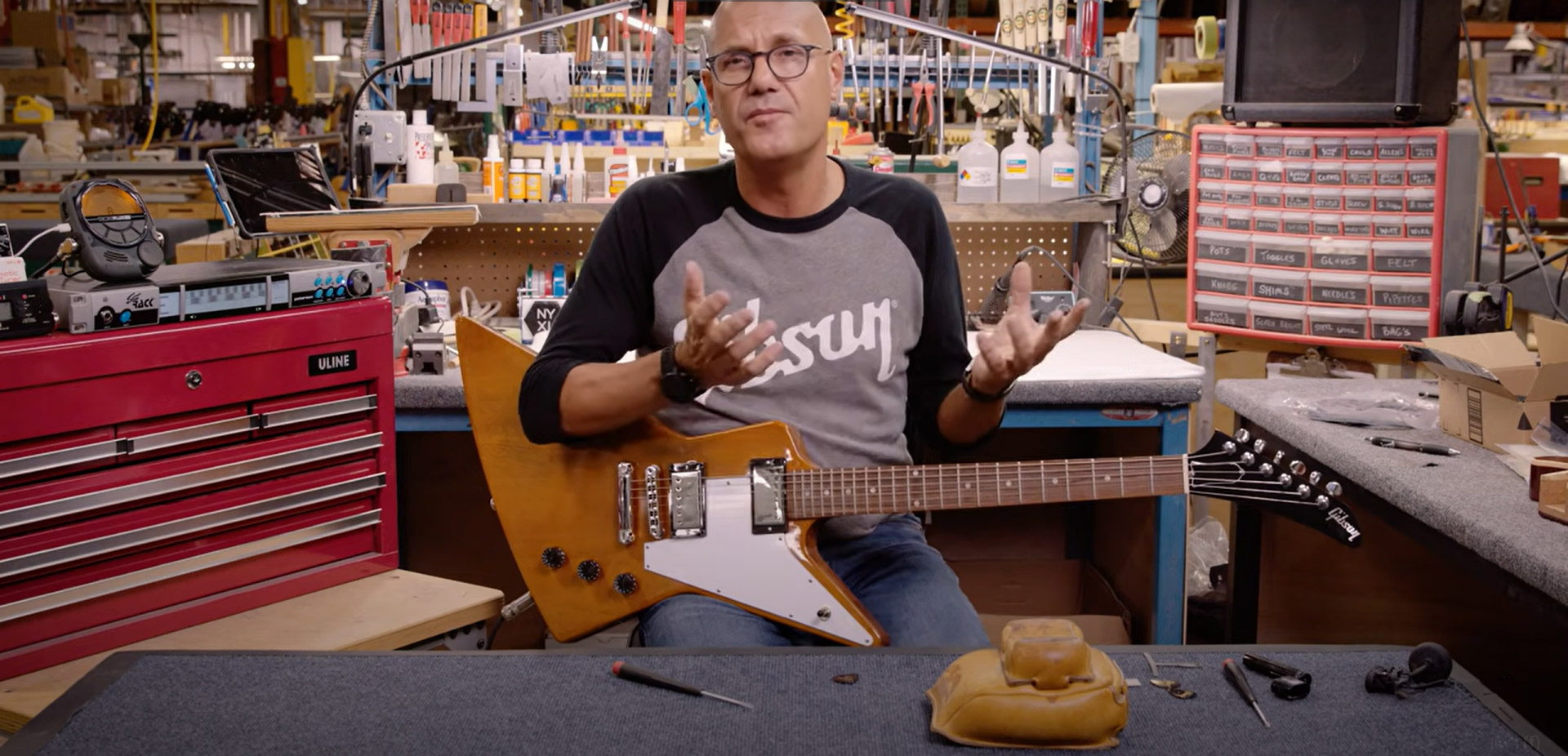Understanding intonation—and how to adjust it—is key to making your guitar play and sound in tune
In this episode of “Gibson’s Guide to Guitar Setup and Maintenance,” Gibson Master Luthier Jim DeCola demonstrates the correct way to adjust the intonation on your electric guitar. Whether you’re a beginner or a seasoned professional, Jim offers pro tips on intonation adjustment and how to set it properly, making the process easy and efficient.
The intonation on your guitar dramatically impacts how in tune it will sound at various positions on the neck. If the intonation is not properly adjusted, your guitar will sound out of tune as you move between different chords and positions. It’s all about the mathematics of equal temperament and the various inevitable compromises that make the guitar a guitar, and the same holds true for any fretted instrument.
While perfect intonation isn’t achievable, Jim’s expert tips will help you maximize the accuracy of your guitar’s intonation, resulting in an instrument that sounds more in tune across all playing positions. Don’t feel bad, though, because piano players have to deal with this stuff, too.
What is intonation?
Technically, guitar intonation refers to the accuracy of the pitches produced by the strings along the entire length of the fretboard. This applies to solitary notes, and notes sounded relational to one other as diads, triads, and extended chords.
When a guitar is properly intonated, the instrument is better in tune with itself across all frets and positions—within the limitations introduced by equal temperament. The notes played are as close to the ideal pitch as possible, from the open strings to the highest frets. Worn frets can negatively affect intonation. Top-wrapping may change string tension and thus the intonation, requiring you to check and resolve any intonation issues with a small adjustment.
Good intonation is crucial for ensuring that chords and melodies sound tolerably correct and harmonious, regardless of where on the neck they are played. Adjusting intonation involves fine-tuning the length of the strings from the bridge to the nut, ensuring that each string vibrates close to the correct frequency at every fret.
Intonation is an art and a science
Over the years, virtuoso guitarists such as Eddie Van Halen have used their ears to “sweeten” tuning and push intonation further toward the particular key of a song, knowing that it is not always a one-size-fits-all affair when it comes to making certain crucial intervals more harmonious—especially thirds in a high-gain context. You can chase the rabbit trail about the overtone series (AKA harmonic series) to learn more about that aspect of electric guitar and music in general. Oh, no! It’s Pythagoras at your door.
To compensate and change things while playing, one can also intentionally over-press certain notes or detune certain strings slightly to push them toward a more desirable consonance. That takes a great ear and finesse, but it’s a real thing to be aware of and work into your technique.
Have you noticed that some guitarists appear to be moving their fingers more horizontally than most while creating vibrato? That is because they are. What they are doing, especially classical guitarists, is gripping the string with the pad of their finger and literally causing it to go slack and then taut (flat and sharp), creating a “real” vibrato. With this in mind, some advanced guitarists can use this technique to alter a note in a chord up or down a few cents. The result is sweeter chords and music.
Classical and nylon strings are a bit easier to manipulate in this manner than round-wound electric guitar strings due to the materials comprising them and less tension in the string itself. They are just a little bit more “grippy.” For vibrato, most electric guitarists push the note sharp, then through the zero point, and sharp again in a rhythmic pattern—still expressive, but not quite the same. “Wide vibrato” and “narrow vibrato” come into play when analyzing a player’s approach to this.
Violinists can use this technique, too, but on fretless instruments, they can also merely tilt the finger on a small imaginary axis and gain expressive vibrato as the pad of the finger shifts on the string. Steve Vai often uses a circular motion that apparently allows him to get a better grip on the string for the true vibrato effect. The moral of the story is that intonation is everywhere on your instrument, not just in the mechanical setup process, and controlling it is worth your practice efforts.
Need a new bridge so you can slot it for larger or smaller string gauges? Shop authentic Gibson parts.
Did you know the Gibson Gazette has an entire channel devoted to maintaining your axe for every musical adventure? Check out our extensive range of tutorials and guides.

